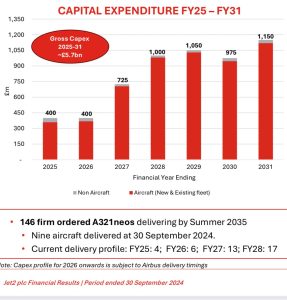You’re an important asset for your company. As such, your employer may offer to share ownership with you by way of incentive stock options. But before you can benefit from your incentive stock options, you’ll first have to get to know your options.
Incentive stock options are granted only to employees, who then have the right to purchase a set quantity of company shares at a certain price, while receiving favorable tax treatment.
There are two types of employee stock options: statutory and nonstatutory. They can also be referred to as qualified and nonqualified, respectively. Incentive stock options are statutory (qualified) and differ from nonstatutory (nonqualified) stock options, or NSOs, in a few key ways:
Here we focus on incentive stock options to examine what employees should consider when deciding what to do with them and the details surrounding their preferential taxation.
Incentive stock options are a used to motivate and retain key employees. Since you need to hold on to your ISOs for a period of time, the only way to capitalize on these benefits is to stay with your firm for the long haul. Also, the higher your company’s share price rises, the greater the reward from your stock options. This encourages high productivity from key employees as they directly benefit from the company’s success.
» How do ISOs differ from RSUs? Learn more about
The day your company issues incentive stock options to you is known as the grant date. At this point, your ISOs are subject to a vesting schedule, or waiting period, until you gain ownership. Once your ISOs vest, you have the right (but not the obligation) to purchase a certain number of company shares at the strike price, which is the fixed exercise price indicated in your ISO grant. You can choose whether or not to exercise your options anytime until your ISO expiration date. Typically, there is a 10-year time frame before expiry.
Generally, if the strike price of your ISOs is less than the current market price of your company shares, you’d consider exercising your options. This way, you could buy stock at the lower strike price and in turn, sell these shares in the market to earn the bargain element — the difference between your strike price and the market price.
If the strike price exceeds the current market price, it wouldn’t make sense to exercise your ISOs because the company’s shares would be cheaper on the stock market. If the strike price never goes below the market price, your ISOs could expire worthless.
When exercising, you don’t always have to purchase the shares with cash. You could potentially opt for a stock swap — depending on if your employer offers it — where you’d exchange the company shares you already own to get more shares. Here’s an example: You can purchase 1,000 shares of company stock at $20 a share with your vested ISO. Shares are trading for $40 in the market. If you already own 500 company shares, you can swap those shares (500 shares x $40 market price = $20,000) for the 1,000 new shares, rather than paying $20,000 in cash.
Alternatively, you might be able to borrow the funds needed to exercise your ISO from your broker and then sell at least a portion of the shares to cover your costs. This is called a cashless exercise, and while it has its advantages, it also disqualifies you from the favorable tax treatment discussed below.
However, you don’t have to exercise your ISOs and immediately sell. You can hold on to your unexercised options until closer to expiry or exercise your ISOs and hold on to the stock indefinitely, especially if you believe in your company’s future prospects.
How do you know which option is best or how long to hold for? Much of the time, it depends on the tax consequences.
Incentive stock options have tax advantages, but there are requirements to follow in order to gain the greatest benefit.
ISOs aren’t taxed when granted, upon vesting or when exercised. Taxes are deferred until shares are sold, and if you meet certain holding requirements, ISOs are subject only to . This differs significantly from NSOs, which are taxed upon exercise at income tax rates and then again with capital gains taxes when shares are sold.
» Feeling philanthropic? can reduce your tax burden
After exercising your ISOs and purchasing shares, waiting over a year from the exercise date and at least two years after the grant date means you’ll meet the requirements for a “qualifying disposition.” This means your transaction will become eligible for preferential tax treatment and you’ll owe only long-term capital gains taxes.
» Interested in reducing capital gains taxes? Consider these
Selling your shares before the holding period ends generates a “disqualifying disposition” and will likely subject you to paying ordinary income taxes on the bargain element as well as short-term capital gains taxes.
Although you can achieve favorable capital gains tax treatment on your ISOs, the bargain element earned must be reported as taxable compensation and may trigger . AMT ensures that certain high-earning taxpayers pay at least a minimum level of income tax.
Holding period risk. Waiting to satisfy the “qualifying disposition” requirements makes sense from the tax perspective. However, the stock could fall during this time and negate the value of your stock option.
Concentrated stock. spreads your investments across various asset classes to reduce risk and balance volatility. As such, it’s important to ensure you’re not overly exposed to your company’s stock to help minimize risk in your overall portfolio.
AMT payment. If you trigger AMT, payment could be problematic. You could get stuck paying your AMT tax bill before you sell the stock, meaning you wouldn’t be able to use the proceeds from the sale to cover your tax payment. It may be a good idea to consider exercising ISOs earlier in the calendar year so you have time to accumulate funds and manage your AMT liability.
Tax withholding. Since taxes aren’t due until shares are sold with ISOs, your employer does not need to withhold taxes on your behalf. It’s important to consider the tax liability and set aside the funds required in preparation for selling your shares.
Departure from employer. If you separate from your employer but have vested ISOs, keep in mind that typically you have three months to exercise your ISOs to maintain their ISO status. After this time, your ISOs convert into NSOs.
$100,000 ISO limit. An employer is limited in the amount of ISOs it can grant to each employee during any calendar year. If the fair market value of the stock exceeds $100,000, the options above the limit are treated as NSOs.
If you receive ISOs as part of your compensation, the hope is that over time, your company’s share price will appreciate well above the strike price. If this happens, exercising your options would mean the ability to sell for a decent profit. However, taking advantage of your ISOs means taking on complex tax scenarios. Hiring qualified tax and financial advisors, who can analyze your overall financial situation, could help you exercise your ISOs and sell your company’s shares at the most opportune time.
This post was originally published on Nerd Wallet







